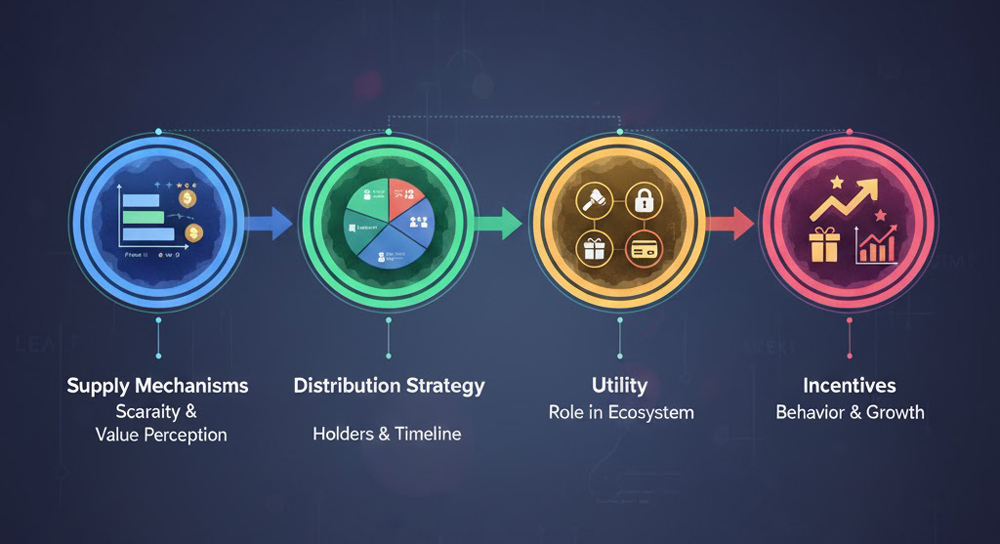In the fast-evolving world of digital assets, one term stands at the core of every successful project — tokenomics. Short for token economics, this concept defines how a cryptocurrency functions, distributes, and grows within its ecosystem. It’s not just about supply and demand — it’s about design, incentives, and the strategic balance that determines a token’s real-world and long-term value.
The Essence of Tokenomics
Tokenomics encompasses every factor that affects a token’s utility and value — from its issuance and distribution to how it’s used within a network. A well-structured tokenomics model ensures sustainability and encourages community participation, while a weak one can doom a project before it even gains traction.

Key elements include:
- Supply Mechanisms: Whether the token has a fixed or inflationary supply directly impacts scarcity and perception of value.
- Distribution Strategy: Fair launches, presales, and vesting schedules determine who holds the tokens — and for how long.
- Utility: The purpose of a token — governance, staking, payments, or access — defines its role in the ecosystem.
- Incentives: Reward mechanisms drive user behavior and network growth.
The Role of Supply & Demand Dynamics
Unlike traditional assets, cryptocurrencies often rely on programmed scarcity. Bitcoin’s 21 million coin cap is a prime example of deflationary design, where limited supply fuels long-term appreciation. Conversely, tokens with inflationary models (such as those used for governance or staking) rely on economic balancing — ensuring new issuance doesn’t erode existing value.
Token burns, buybacks, and halving events are common mechanisms to maintain equilibrium, fostering scarcity and investor confidence.
Governance and Utility: The Use-Case Factor
Utility defines purpose — governance tokens empower holders to shape a network’s future, while utility tokens enable access to decentralized applications or exclusive features. In successful ecosystems, tokenomics tie these functions together, ensuring that user engagement directly benefits the network’s growth.
For instance, staking models reward holders who secure a network, aligning personal profit with collective stability — a cornerstone of sustainable crypto economics.
Incentives and Behavior: Designing for Growth
Strong tokenomics align incentives between developers, investors, and users. If structured properly:
- Developers gain funding without over-centralization.
- Investors are rewarded for long-term participation rather than short-term speculation.
- Users contribute to network activity, liquidity, and governance.
Projects like Ethereum, Avalanche, and Solana each use unique incentive frameworks, showing that there’s no one-size-fits-all model — only balance between utility, scarcity, and growth.
Risks and Red Flags
Poor tokenomics often signal future instability. Watch for:

- Unrealistic emission rates that dilute value over time.
- Excessive insider allocation leading to market manipulation.
- Lack of real utility beyond speculative trading.
Transparent tokenomics are the foundation of trust — a crucial factor in separating sustainable projects from fleeting hype.
The Takeaway
Understanding tokenomics is understanding the heartbeat of cryptocurrency value. Every chart, trade, or trend ultimately stems from the design of a token’s economy. As investors and builders navigate the digital frontier, mastering tokenomics isn’t optional — it’s essential.
A cryptocurrency’s long-term success depends not on luck, but on the strength of its economic DNA.
MarketMind — Navigating the Crypto Frontier with Clarity and Confidence.

Leave a Reply